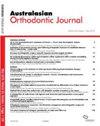TikTok 谈牙齿:对固定矫治器相关 TikTok 视频的定量和定性分析
IF 0.5
4区 医学
Q4 DENTISTRY, ORAL SURGERY & MEDICINE
引用次数: 0
摘要
定量和定性分析 TikTok 上与正畸固定矫治器有关的视频的内容、可靠性和质量。 创建一个新的 TikTok 帐户,并进行三次搜索(#braces、#braceface 和 #bracetips)。使用改良的 DISCERN 工具、内容评分和全球质量量表 (GQS) 对总共 150 个视频(三个搜索中的每个搜索都提取了 "热门 "标签中的 50 个视频)的质量、内容和可靠性进行了评估分析。 共有 136 部视频符合纳入标准,其中 46.3% 由牙科专业人士上传,53.7% 由非专业人士上传。其中,牙科专业人员上传的视频在三种评分工具中的得分均高于非专业人员。视频的 GQS 得分为 2.36/5,内容得分为 1.31/5。根据 GQS 评分标准,60% 以上的视频质量较差。GQS 和 DISCERN 分数之间存在很强的相关性。 TikTok 视频在正畸固定矫治器方面的整体内容、可靠性和质量都很差。这些视频让患者补充了有关固定矫治器的知识,并更多地参与到他们的正畸护理中;但是,应探索相关指南,以确保在 TikTok 上传播准确的正畸信息。本文章由计算机程序翻译,如有差异,请以英文原文为准。
TikTok talks teeth: a quantitative and qualitative analysis of fixed appliance related TikTok videos
To quantitatively and qualitatively analyse the content, reliability and quality of TikTok videos related to orthodontic fixed appliances.
A new TikTok account was created, and three searches were conducted (#braces, #braceface and #bracetips). A total of 150 videos (n = 50 featured in the ‘Top’ tab were extracted for each of the three searches) were assessed for the analyses of quality, content and reliability using the modified DISCERN tool, a content score, and the Global Quality Scale (GQS).
A total of 136 videos satisfied the inclusion criteria, involving 46.3% identified by dental professionals and 53.7% identified by laypersons. Of these, the videos uploaded by dental professionals rated higher in the three scoring tools compared to laypersons. The GQS score of videos was 2.36/5 and the content score was 1.31/5. Over 60% of the videos were of poor quality according to the GQS scale. A strong correlation between GQS and DISCERN scores was found.
The overall content, reliability, and quality of TikTok videos regarding orthodontic fixed appliances was poor. The videos allowed patients to supplement their knowledge about fixed appliances and become more involved in their orthodontic care; however, guidelines should be explored to ensure the dissemination of accurate orthodontic information on TikTok.
求助全文
通过发布文献求助,成功后即可免费获取论文全文。
去求助
来源期刊

Australasian Orthodontic Journal
Dentistry-Orthodontics
CiteScore
0.80
自引率
25.00%
发文量
24
期刊介绍:
The Australasian Orthodontic Journal (AOJ) is the official scientific publication of the Australian Society of Orthodontists.
Previously titled the Australian Orthodontic Journal, the name of the publication was changed in 2017 to provide the region with additional representation because of a substantial increase in the number of submitted overseas'' manuscripts. The volume and issue numbers continue in sequence and only the ISSN numbers have been updated.
The AOJ publishes original research papers, clinical reports, book reviews, abstracts from other journals, and other material which is of interest to orthodontists and is in the interest of their continuing education. It is published twice a year in November and May.
The AOJ is indexed and abstracted by Science Citation Index Expanded (SciSearch) and Journal Citation Reports/Science Edition.
 求助内容:
求助内容: 应助结果提醒方式:
应助结果提醒方式:


